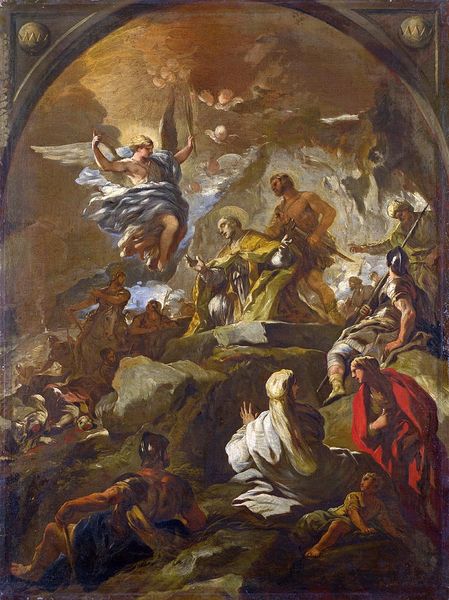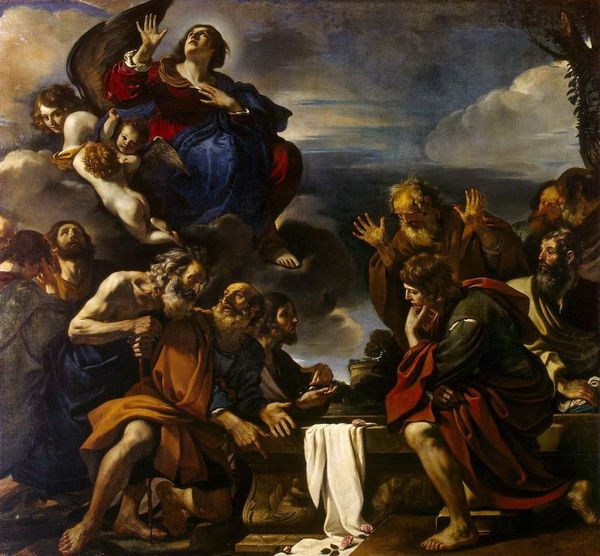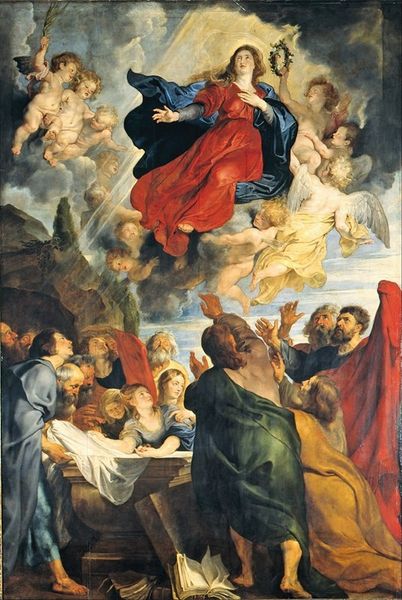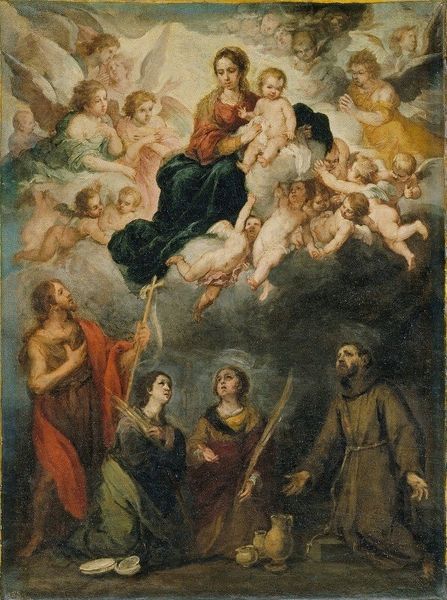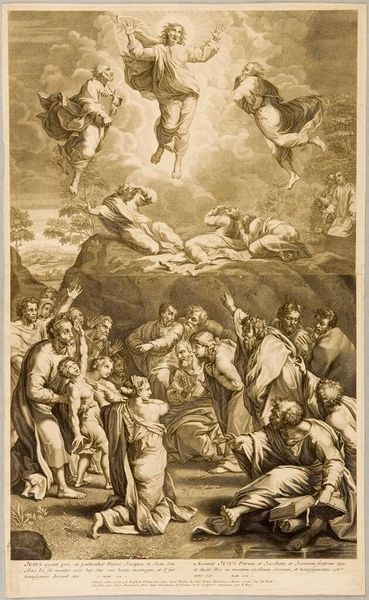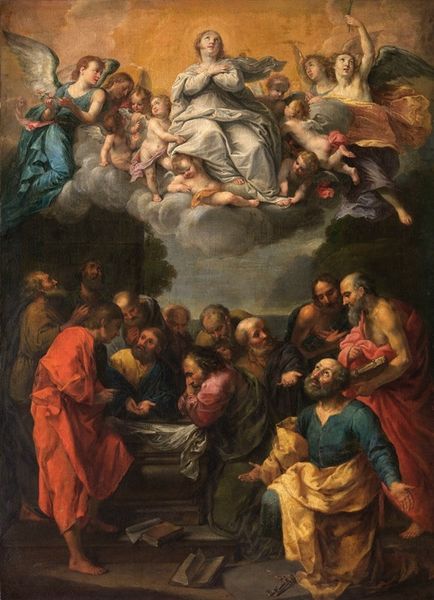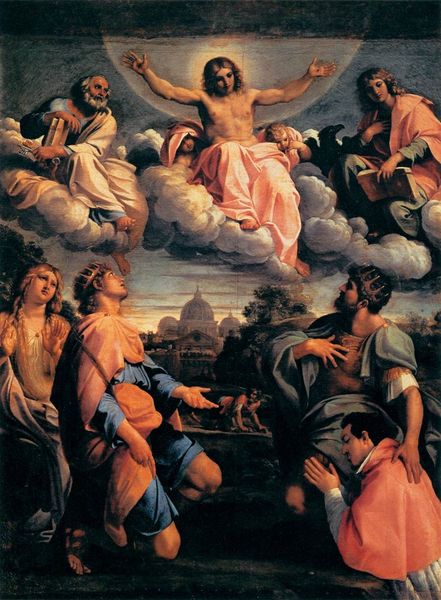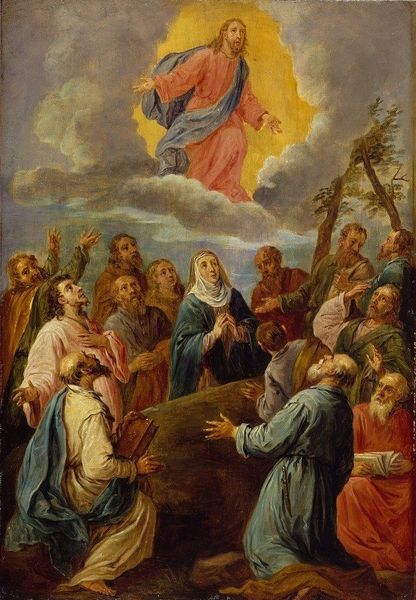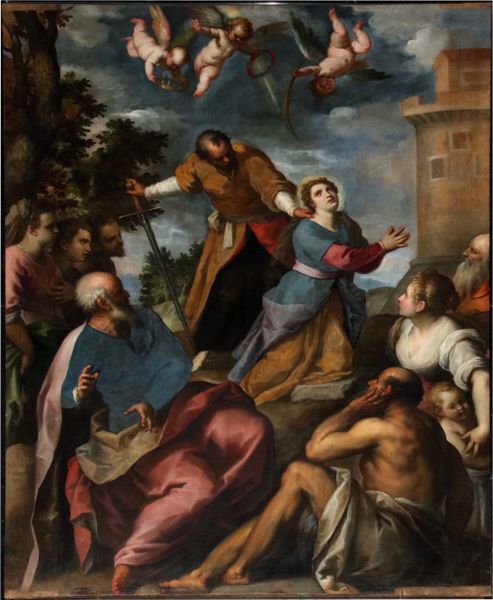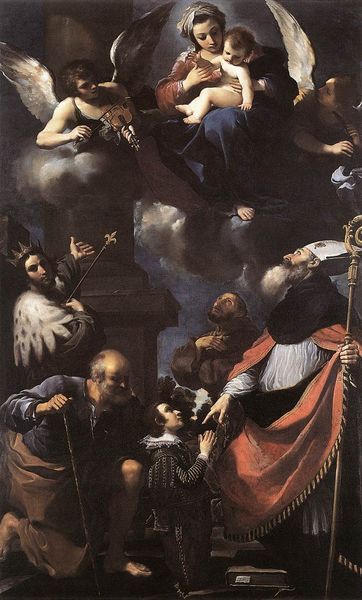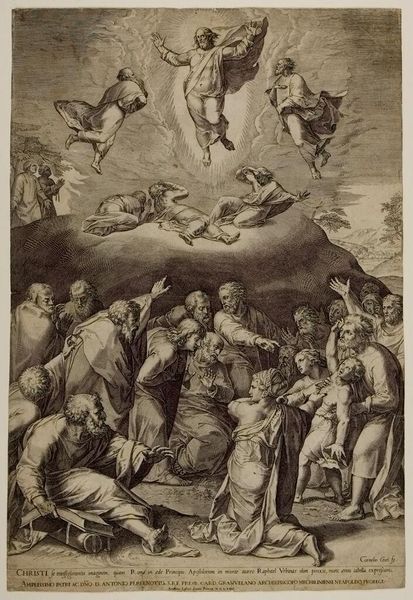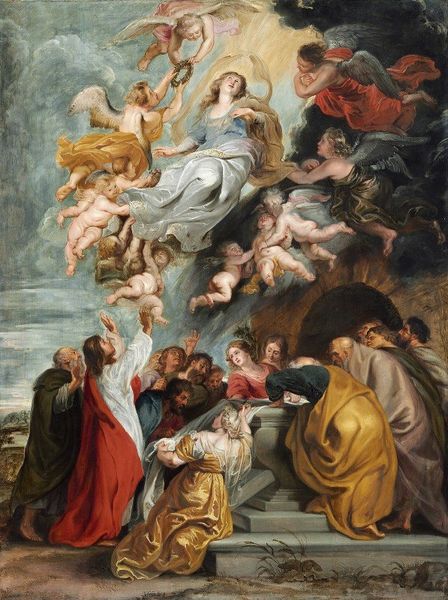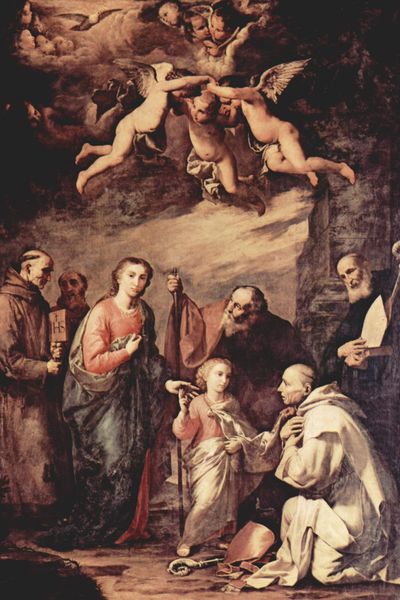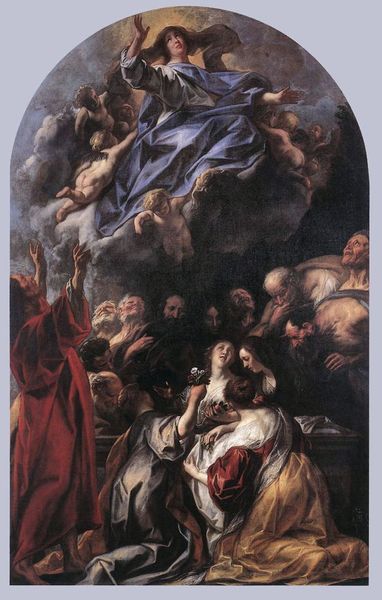
painting, oil-paint
#
high-renaissance
#
allegory
#
painting
#
oil-paint
#
figuration
#
11_renaissance
#
oil painting
#
history-painting
#
academic-art
#
italian-renaissance
Copyright: Public Domain: Artvee
Editor: Raphael's "The Transfiguration," rendered in oil, presents this incredible dichotomy – a soaring Christ in the upper register and a scene of earthly turmoil below. I'm struck by the division, how the top feels almost ethereal while the bottom is so weighty with human struggle. What do you see in this piece? Curator: I see the human capacity for hope and despair, presented in parallel. Raphael masterfully employs a visual language deeply rooted in faith, yet surprisingly resonant even for those detached from religious contexts. Notice how the ascending Christ, bathed in light, recalls the divine right of kings. Can you discern its echoes? Editor: The implied authority? Definitely. It's in the upward momentum, the figures looking on, bathed in a sort of light. How does this idea relate to the story being depicted? Curator: Precisely. Consider, too, the symbolic power of light versus shadow, good versus evil, order versus chaos, all played out through this composition. But do you observe how these clear binaries become complicated by the group down below, where gestures express a range of doubt, suffering and pleading that ultimately acknowledges the humanity of the story being depicted? Editor: So it's not just about blind faith, but about the human struggle to achieve faith, maybe? Curator: Exactly. We are drawn to certain icons, as objects charged with layers of social and political meaning, and with our own hopes. Raphael seems to be playing into that draw. Editor: That gives me a lot to think about; I hadn’t considered how the piece is speaking to different levels of experience. Curator: It's fascinating how Raphael uses a familiar visual vocabulary to portray humanity's continuous, and often fraught, search for meaning.
Comments
No comments
Be the first to comment and join the conversation on the ultimate creative platform.
